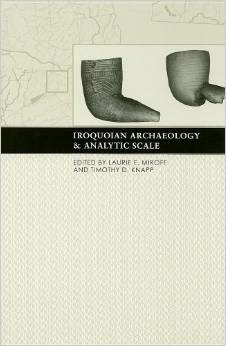Description
A more robust archaeological interpretation can be produced if a multiscalar approach is brought to bear on the study of the past. In Iroquoian Archaeology and Analytic Scale, ten contributors conducting studies of groups around New York State and southern Ontario present contemporary research focused not only on examining the role of scale and how it impacts the field of Iroquoian studies, but also how archaeologists studying other Native Americans can expand their own research. Specifically, the contributors employ a variety of spatial, temporal, and methodological scales to reveal patterns and insights into the cultural interactions that might otherwise be missed by a less multiscalar approach. Furthermore, the diversity of research spans nearly a millennium, from AD 900 to 1800, and encompasses several different topographical settings, including major river flood-plains, upland headwater areas, and terraces along smaller tributaries, yielding a plethora of current findings from the largest of villages to the smallest of seasonal campsites. Laurie E. Miroff and Timothy D. Knapp have organized these essays in roughly chronological fashion and provide an introduction that addresses the importance of a multiscalar analysis. This volume of Iroquoian-specific yet wide-ranging essays will be of interest to anyone specializing in Native American studies in the Northeast. It will also benefit archaeologists who wish to gain a better understanding of how using a multiscalar approach in their own research can be an integral step toward a more dynamic view of the Native American lived experience.






Reviews
There are no reviews yet.